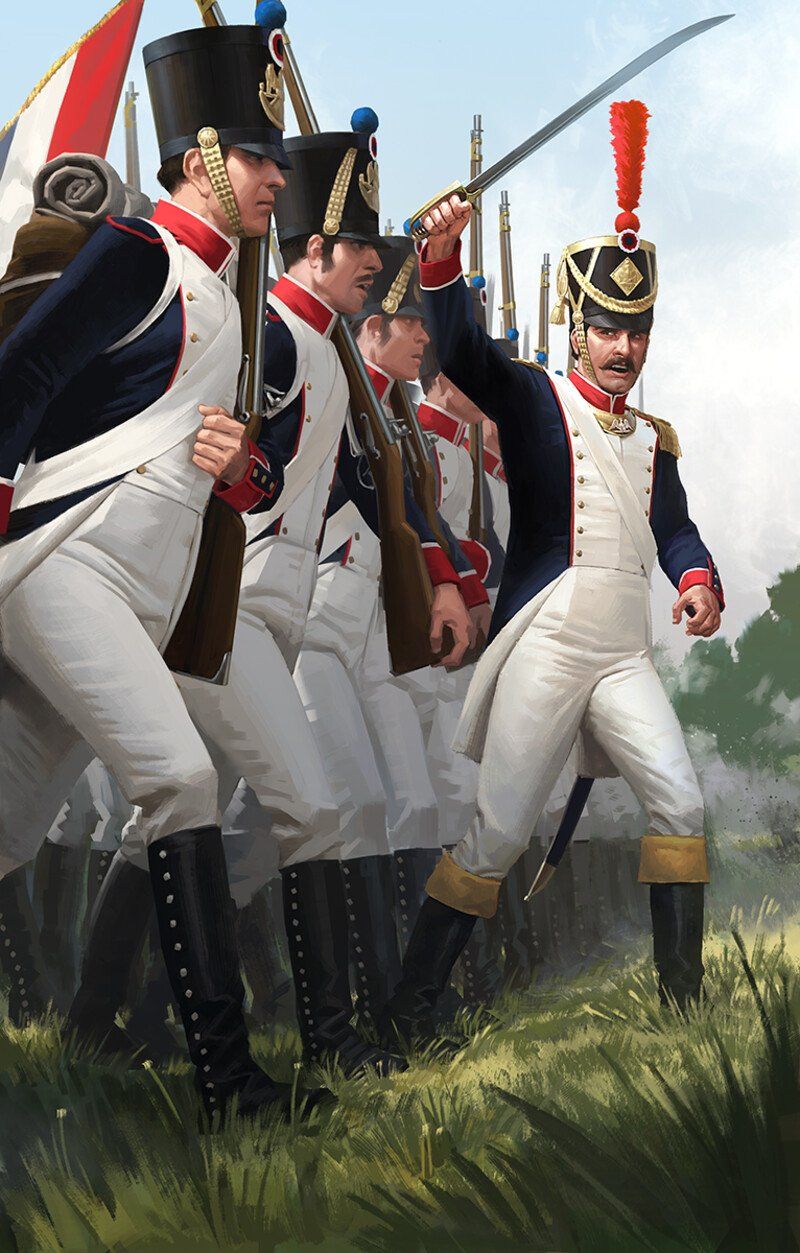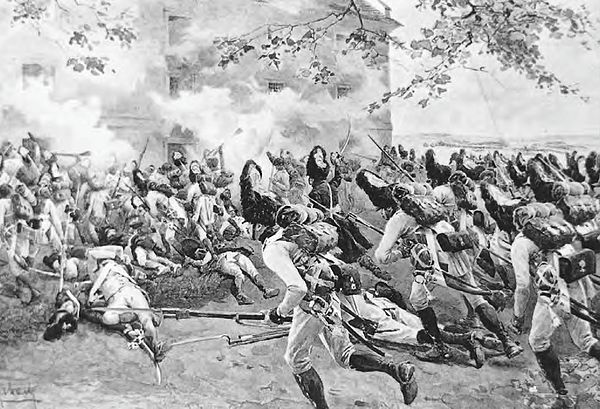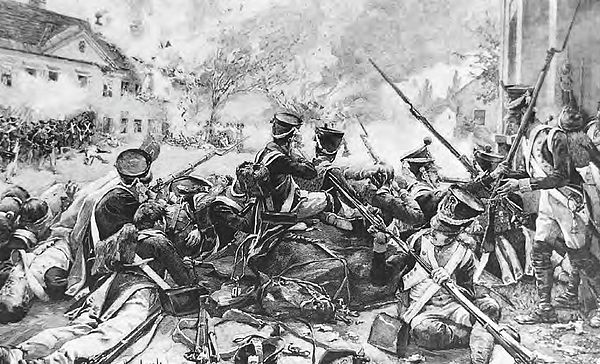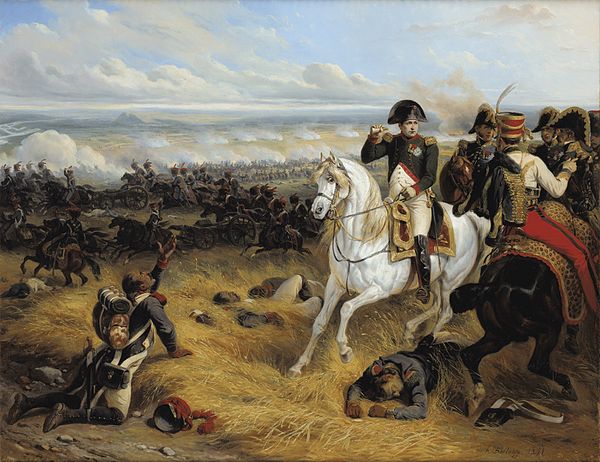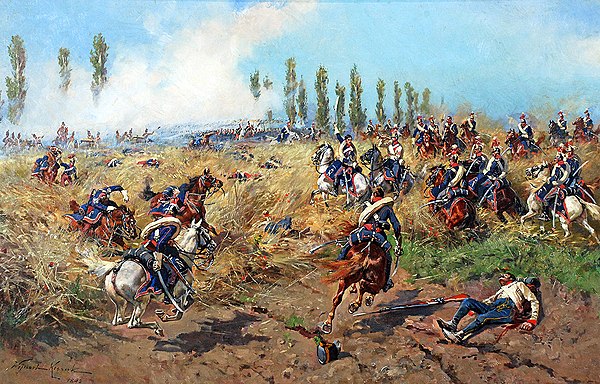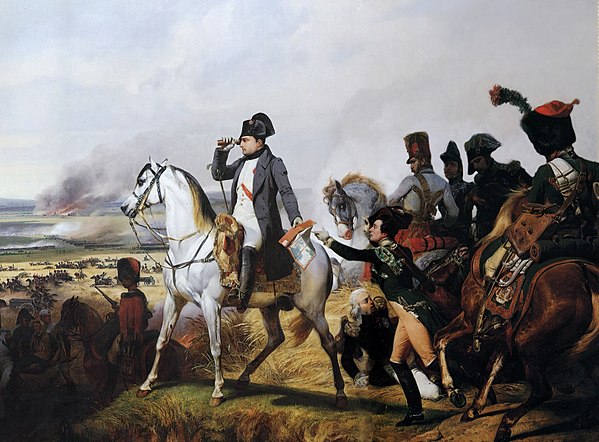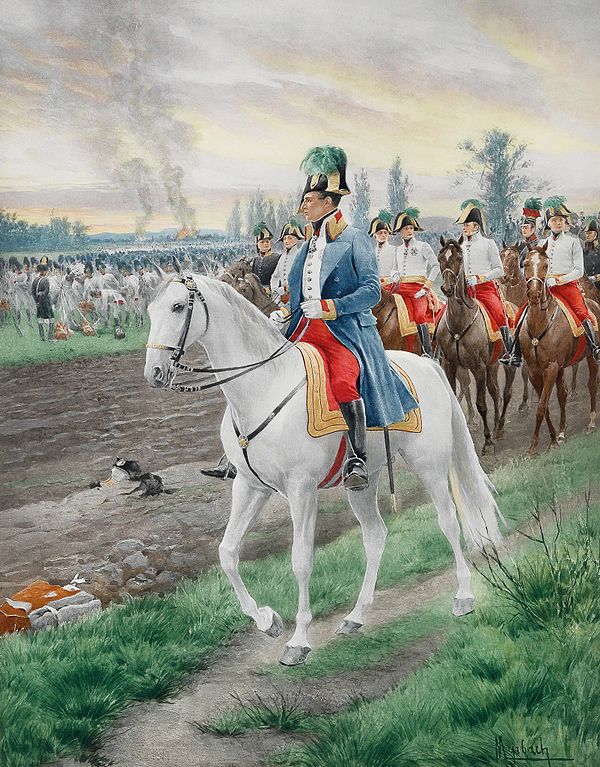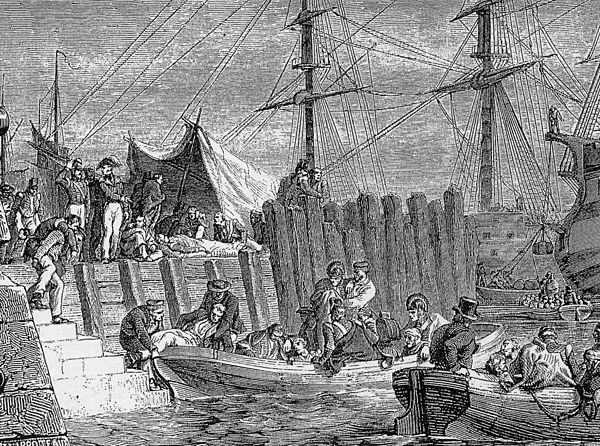The Battle of Aspern-Essling, fought on 21–22 May 1809, marked the first major defeat of Napoleon in a decade. As Napoleon's forces attempted to cross the Danube near Vienna, they were met and repelled by the Austrian army led by Archduke Charles. Napoleon's army occupied Vienna, but the Danube bridges had been destroyed, forcing the French to find another crossing point. Their first attempt on 13 May was thwarted with significant losses. They then focused on the island of Lobau, bridging the channels on the night of 19–20 May and securing the island. By the morning of 21 May, 25,000 French troops had crossed to the Marchfeld plain. Archduke Charles planned to attack the French before their full army could cross.
Battle
First Day: The battle began with the Austrian attack on the village of Aspern. Initial Austrian success was countered by French General Masséna, who held the village with determination. Meanwhile, fierce fighting erupted in Essling, where Marshal Jean Lannes resisted Austrian assaults. French cavalry charges aimed at disrupting Austrian artillery saw limited success. By nightfall, the French retained half of Aspern, and heavy fighting persisted in Essling.
Second Day: At dawn on 22 May, Masséna recaptured Aspern, but the Austrians took Essling. Lannes, reinforced, managed to push them back. Napoleon's central assault almost broke the Austrian line, but Archduke Charles' timely deployment of reserves halted the French advance. The French center was further pressured when the Danube bridges were destroyed by Austrian attacks, prompting Napoleon to suspend the offensive. Despite another assault by Rosenberg on Essling, the French managed a costly retreat to the riverbank.
Aftermath
The French suffered over 20,000 casualties, including the loss of Marshal Lannes, a crucial and trusted commander of Napoleon. Austrian casualties were similarly heavy, but they secured a strategic victory, their first significant triumph over Napoleon in a decade. The Austrians failed to capitalize on their success, allowing the French to regroup. A month later, Napoleon achieved a decisive, though costly, victory at the Battle of Wagram. The Battle of Aspern-Essling demonstrated the resilience of the Austrian army and highlighted the vulnerabilities of Napoleon's forces, marking a significant turning point in the Napoleonic Wars.
